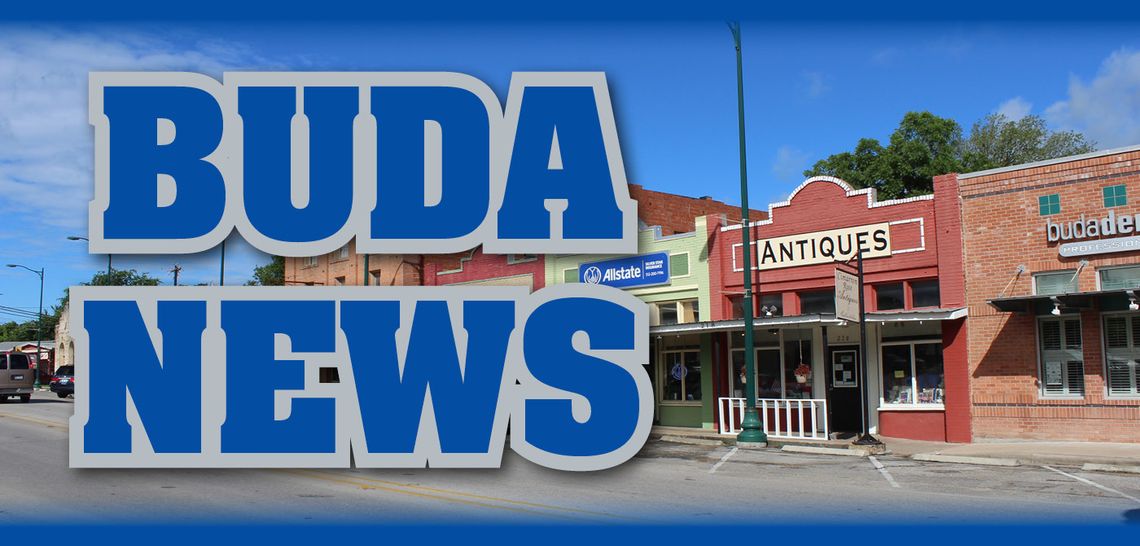BUDA — Buda City Council explored options for the city’s future at its meeting held on Tuesday, Sept. 5, after hearing a presentation on the final draft of the 2023 Downtown Master Plan and tabling a resolution to approve the Transit Development Plan (TDP).
Downtown Master Plan
As a part of the overall long-range Comprehensive Plan, the final draft of the 2023 Downtown Master Plan was presented by Abby Gillfillan, principal planner of and partner with Lionheart Places LLC.
The process for the Downtown Master Plan began in October 2022 with the formation of the Downtown Master Plan Committee (DTMPC), which met four times over the course of nearly a year. Three open houses were held to gather community input on the plan, along with an online community survey.
The plan has five project goals, including the following:
• Place - extend and expand the downtown experience
• Walkability - enhance streets and public spaces for pedestrians
• Nature - integrate natural areas, parks and trails into the downtown experience
• Revenue - increase revenue generated in downtown
• Brand - develop and implement a unique design aesthetic and brand.
“One of the things about these goals is that they were constantly iterated throughout the process,” said Gillfillan. “One of the fun things about working with the city of Buda is you guys have done so much already. You have a proven track record of executing some great projects.”
Three alternative plans for guiding future growth and investment in downtown Buda received the most support, and from those plans, the following design principles make up the framework plan:
• Activity nodes act as social and economic anchors.
• Activity nodes are spaced roughly 1/4 mile from each other.
• Corridors are prioritized for pedestrian-friendly amenities, such as wide sidewalks, bulb-outs (or curb extensions), crosswalks and street trees.
• Corridors are activated with shopfronts, landscaping and art that create interest and attractiveness.
• City park is seamlessly integrated into the downtown experience.
• Areas for public parking are placed within a comfortable walking distance.
• Strategic investments in public infrastructure will encourage private investment in line with the downtown framework and goals.
• Public and private partnerships help to convert underutilized land and buildings owned by the public sector into new, vibrant destinations.
• Streetscape design elements from landscaping, materials and lighting are coordinated and consistent.
• Gateways are located at each proposed node and signal when you have entered the downtown district.
The Downtown Master Plan includes five projects, including Austin Street reconstruction, South Main Street improvements, a two-sided Main Street at the Houston Street intersection, a greenbelt and trail corridor and a repurposed Buda Upper Campus.
Programs — one-time events or ongoing actions that influence the study area, but do not require permanent physical changes — include establishing a sidewalk and pedestrian safety program, applying for cultural district designation through the Texas Commission of the Arts and implementing the parking action plan.
Policies in the Downtown Master Plan include an update to Buda’s Unified Development Code, the establishment of a downtown financing district and the creation of a regional stormwater management plan.
Several city commissions and boards, including Parks, Library and Planning and Zoning, have all unanimously approved the proposed final draft.
“I don’t think I’ve ever seen anyone go through all these committees and get all these votes. The plan looks great,” said council member Paul Daugereau.
“This is quite a list of activities and folks y’all connected with and got approval from. It was pretty much unanimous down the line,” council member Matt Smith added. “Thank you for all the communication and coordination and time and effort. The goals are spot on.”
The final meeting of the DTMPC will be held in early October. Buda City Council will consider adopting the 2023 Downtown Master Plan sometime between October and December.
Transit Development Plan
Buda City Council also voted 6-1 to table a resolution approving the TDP on Tuesday after a presentation from Capital Metropolitan Transportation Authority (CapMetro) at the Aug. 15 meeting.
By adopting the plan, council was not committing to a specific route or obligating funds; however, adoption of the plan would allow the city to access federal Section 5307 funding, through CapMetro, for transit purposes in moving forward with an option for the future.
In mid-April, Buda City Council partnered with CapMetro to develop a three-year TDP, identifying transit needs, analyzing service options and financing and providing recommendations for transportation services.
“The TDP explores safe, reliable, efficient and accessible transportation options for residents of and visitors to the city of Buda, regardless of socioeconomic status or disability,” Buda Assistant City Manager Wendy L. Smith said when the plan was first introduced.
The plan presented to council at Tuesday’s meeting is the result of several months of outreach, including two open houses, three surveys with 822 responses, three stakeholder interviews and many pop-up events, as well as social media and web outreach, according to HNTB.
Three recommended service alternatives were identified, each of which considers technical analysis findings and community feedback and assumes the implementation of a bus stop utilizing Cabela’s parking lot and IH-35 as the primary corridor.
Alternative 1, or the Yellow Route Stop Addition, provides base regional connectivity with an estimated cost to the city of $89,561 in 2024. Alternative 2, or Southpark Meadows, is a commuter service with an estimated cost of $91,427. Alternative 3, Buda Pickup and Buda Express, the most robust option, is a local service and a one-seat ride from Buda to downtown Austin with a combined estimated cost of $1,420,587. These estimates include capital costs in year one. Section 5307 funds would cover 40% of operating and 80% of capital costs.
“We also want to stress that this plan is a menu of options. Individual services provided within each alternative could be selected and moved forward with based on council’s feedback and the community’s needs,” said Peter Barrilleaux, HNTB consultant project manager for the TDP.
The following steps include continuing interagency coordination, service planning and public engagement related to recommended near-term service alternatives, further evaluating the viability of more resource-intensive service alternatives, incorporating relevant committees into TDP efforts and identifying other state and federal funding opportunities to support future implementation.
“I do understand unlocking a door to federal funding and grant funding. I am a little hesitant about just these three alternatives. If we were to adopt tonight and then all get hit by a bus, someone [would] pick this up and say, ‘Buda wants to do one of these three alternatives; it just wasn’t decided yet.’ I don’t want to be limited to just these three. Nothing really jumps off the page as far as serving the needs of our citizens from all the survey information and engagement,” said Smith. “Adopting it as a plan even with the benefit of possibly unlocking dollars? It would be unlocking dollars to do one of these alternatives. I’m not quite there to say that this is Buda’s. I feel like this is Austin’s idea for Buda. Not Buda’s idea for Buda.”
“From my seat, with the amount of money that we’re looking at from the low end to the high end, I want to get our citizens moving around in our own city before getting them out of the city,” council member Monica Davidson said. “I understand there is some need for this, I just don’t completely know what it is and that these are the options.”
Council questioned whether to adopt the TDP in order to secure federal funding, with the intention of readdressing the transit means and routes.
“Through this process, it’s an ongoing plan, working with interagency communication and ideas of the routes. This is to be able to give a foundation for that and we can continue to work together on solutions,” said Julie Mazur, manager of Regional Coordination Planning for CapMetro. “We have these service alternatives, but we always still have that planning process. [Council’s direction] could be flexible to explore options with something that’s very similar. We know that once we get boots on the ground and start looking again at a route and working with the city, there may be something that needs to be flexible.”
Members voted 6-1 to table the item and include resolution language that could be reviewed pursuant to the council’s discussion at the next regularly scheduled meeting on Sept. 19.
To view the 2023 Downtown Master Plan, visit ourbuda.com/downtown-master-plan.
For more information about the TDP, visit budatx.gov/841/Buda-Transit-Development-Plan.
Buda City Council explores Transit Development Plan, Downtown Master Plan
BUDA — Buda City Council explored options for the city’s future at its meeting held on Tuesday, Sept. 5, after hearing a presentation on the final draft of the 2023 Downtown Master Plan and tabling a resolution to approve the Transit Development Plan (TDP).
- 09/13/2023 08:00 PM










